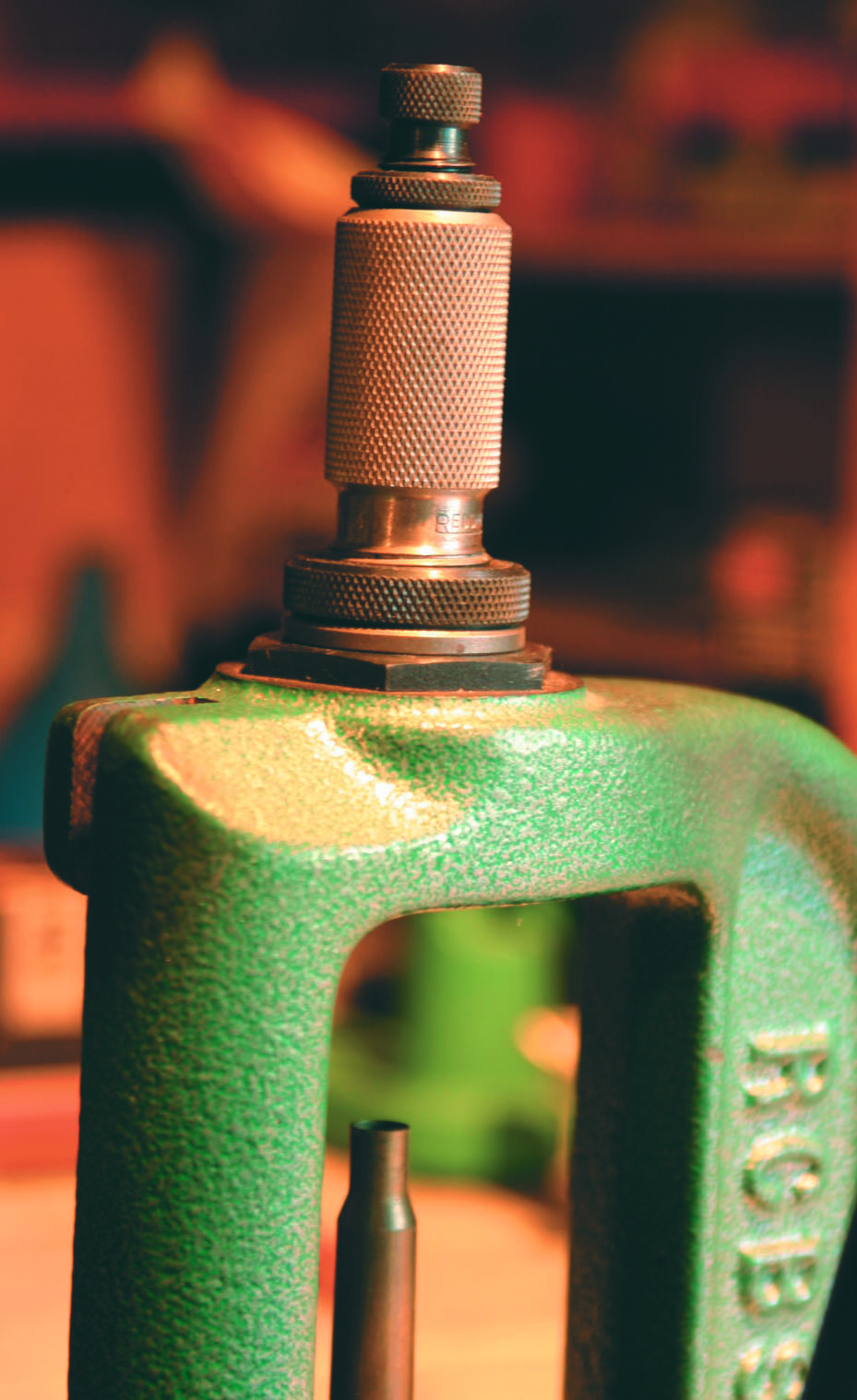Bench Topics
Partial Sizing of Brass
other By: John Barsness | December, 25
Most handloaders just screw the sizing die into the press until it bottoms out against the shellholder, then tighten everything down. This works pretty well most of the time, the reason most loading- die instruction manuals tell you to do it that way.
But occasionally it helps to modify this procedure a little. For instance, I almost never use plain neck-sizing dies anymore. Most have too much slop in the die body to keep the case straight, thus the neck can end up pointing in a different direction than the body of the case, which does no good for accuracy.
If I’m looking for the kind of accuracy neck-sizing supposedly provides, instead I’ll use a fulllength die to partially size the case.

This is also the way some more sophisticated neck-sizing dies work, such a Redding’s “S” dies. The body of the brass is kept very well aligned, while the neck is sized down just enough with an interchangeable bushing. Lee’s Collet dies work on a similar principle, but with a 4-piece collet that compresses the neck around a mandrel.
Often straight-wall brass, such as revolver and most black powder rifle cases, can also be partially sized. I do this quite often with cartridges as varied as the .38-55, .405 WCF, .45 “Long” Colt and .45-70. Sizing only as much of the case as will be holding the bullet, leaves the body of the case closer to chamber dimensions, thus centering the cartridge more closely in the chamber. Here the technique is to unscrew the die to the appropriate height, without using washers or indeed tightening the die down in any way. The “floating die” tends to center the case.
Another advantage of this method is that very often you don’t have to lube the cases. This helps varmint hunters enormously when loading hundreds of cases. Not lubing when partially- sizing works best with sloping cases such as the .22 Hornet and .22-250 Remington. (When loading more parallel-sided cases such as the .204 Ruger and .223 Remington, they either must be lubed when partial sized, or sized in an “accuracy” neck-sizing die such as the Redding “S” or Lee Collet.)
Yet another advantage of partial sizing is that cases stretch far less during sizing. With modern boltaction rifles, full-length sizing is the primary cause of case stretch, so partial-sizing often means you won’t have to trim several hundred cases.
When loading for a serious big game hunt, or any sort of dangerous game hunting, full-length sizing helps to ensure that any round will chamber easily. But when shooting smaller targets, partial sizing may not only provide finer accuracy but save time, important when you’re putting together 1000 rounds of .22 Hornet ammo.

